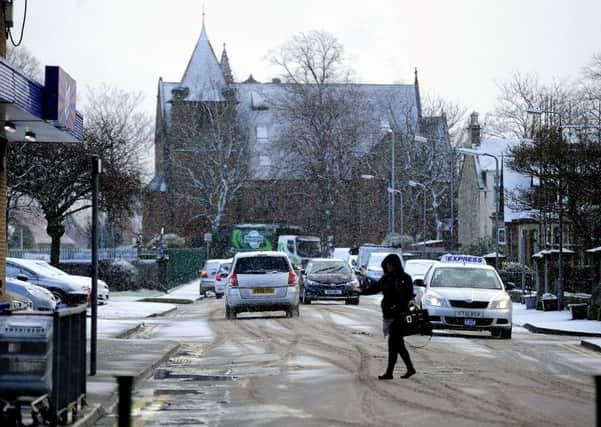Allan Macpherson: Five steps to ward off winter damage
This article contains affiliate links. We may earn a small commission on items purchased through this article, but that does not affect our editorial judgement.


Desmond broke the record for a 24-hour period of rain with 341.4 millimetres, and the Association of British Insurers (ABI) announced last December that it was expecting to pay out more than £520 million to help communities and businesses recover. According to the ABI, more than 4,000 claims were estimated to be related to business.
The damage from the storm has reinforced the need to protect against extreme winter weather such as high winds, floods, snow and freeze, so here are five steps for businesses to take to help prevent damage in extreme winter weather conditions:


Check for existing damage
Advertisement
Hide AdAdvertisement
Hide AdDamage caused by extreme instances of wind and rain is often exacerbated by existing faults within a property. Before bad weather arises businesses should check for vulnerabilities, such as loose material, damage to the roof or walls.
For damage caused by wind, this is often due loose roofing or wall coverings being “peeled back” as wind gets underneath, causing further damage to roof cover and walls.
For damage caused by rain, this is often due to a build-up of water due to damaged or blocked water removal systems, leading to the roof becoming overloaded resulting in a localised collapse.


Ensure heating and other support systems are operational
In the cold weather that winter can bring, business owners should guarantee that heating systems are operational and that fuel supplies are well stocked.
Heating systems must stay operational to ensure that other support systems are not compromised. If a fire were to occur, frozen piping may mean that sprinkler systems will not operate properly, if at all, resulting in increased damage sustained from the fire. If heating systems are not operational, businesses could suffer damage throughout their property, as pipes are damaged by ice build-up.
Business owners should also ensure that reserve heating equipment is available for employees, and that anti-freeze supplies are on hand for cooling system maintenance.
Regular maintenance
Unless systems are maintained properly, they may not work when bad weather hits. Poor maintenance can weaken the building, making it more susceptible to bad weather and other disasters.
Check fences to see if they are secure. Check that the overall “building envelope” is in good condition. Test trace heating systems regularly. Make sure your doors and windows have secure fastenings.
Be prepared to deal with unexpected damage
Advertisement
Hide AdAdvertisement
Hide AdNot all storms and floods are predictable. However, ensuring that systems are in place to deal with unexpected events will mitigate the damage they cause, increasing business resilience.
Know how to cut off utility supplies in case of floods. Have procedures for maintaining adequate heat, especially if power outages occur. Ensure that materials are on hand to mitigate damage to machinery and the property, for example plastic sheeting to cover valuable items.
Plan ahead
Business that don’t plan ahead and don’t have continuity plans in place can be at a disadvantage to their competitors. Market share, profitability and reputation can all be at risk, and businesses must do all they can to limit that risk.
Have employees who regularly monitor weather reports to give warning of serious weather events. Have back-ups for data to guarantee business continuity if data centres are damaged, or are no longer operational. Have damage mitigation materials on hand, for example sandbags to divert water from floods.
When it comes to loss prevention, proactivity is critical. Business continuity plans should be thorough, covering a wide range of contingencies: recovery, the safety of employees, the retrieval of back up business data, emergency communications, the possible relocation of business operations to an alternative location, and the sourcing of goods from alternative suppliers.
If businesses can establish an effective continuity plan that integrates with day-to-day operations of the business, they can build business resilience – a huge asset in today’s world.
• Allan Macpherson is operations chief engineer at global commercial property insurer FM Global
